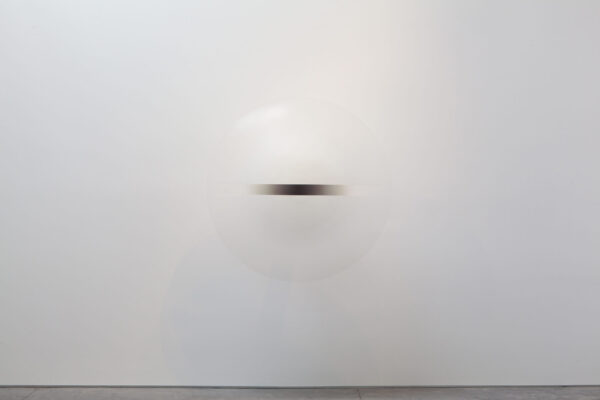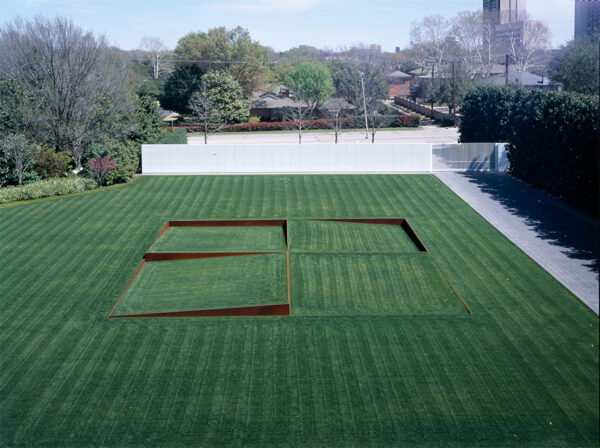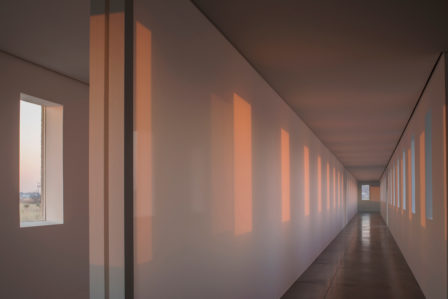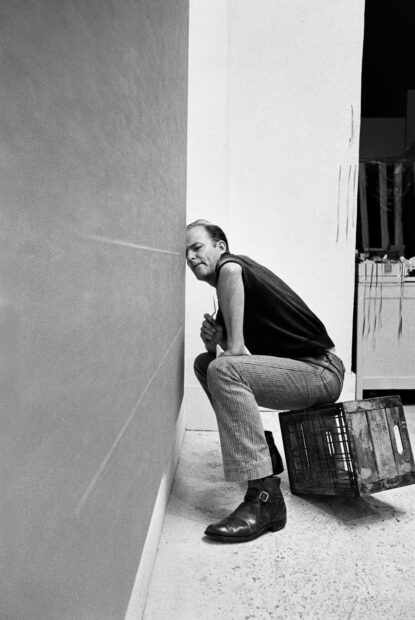Robert Irwin, the renowned artist known for his site-specific installations, died due to heart failure on Wednesday, October 25, 2023, at the age of 95.
Mr. Irwin was born on September 12, 1928 in Long Beach, California. As a young man, Mr. Irwin joined the U.S. Army and served in Europe in the late 1940s. Following his service, he returned to California and spent a number of years attending art schools in Los Angeles. From 1948 to 1950 he studied at Otis Art Institute (now Otis College of Art and Design), then in 1951 he attended the Jepson Art Institute, and from 1953 to 1954 he attended the Chouinard Art Institute (now California Institute of the Arts).
Early in his artistic career, Mr. Irwin focused on painting with a style rooted in Abstract Expressionism. During the mid-1950s he returned to Europe and spent eight months living in isolation in the Balearic Islands, east of Spain. In 1958, Mr. Irwin joined Ferus Gallery, which had been founded by Walter Hopps in Venice Beach the previous year. His relationship with Mr. Hopps and the gallery helped establish his reputation as an artist. Later, in 1965, Mr. Hopps, through organizing the Estados Unidos da América section of the São Paulo Bienal, showcased Mr. Irwin’s work to an international audience alongside that of Barnett Newman, Larry Bell, Billy Al Bengston, Donald Judd, Larry Poons, and Frank Stella.
Pace Gallery, which has represented the artist since 1966, notes that by the early 1960s Mr. Irwin’s work “took on increasingly illusionistic dimensions.” It was during this time that Mr. Irwin had shifted into a minimalist aesthetic with his line and dot paintings that used color, space, and repetition to play with how the eye perceives and forms shapes.
In a 1993 interview by Vivian Sobchack for Artforum, Mr. Irwin spoke about the work that went into his dot paintings. He said, “The dot paintings were a real genuine pain in the ass to do. I got tremendous headaches. If the dots were too uniform you were aware of a pattern, if they were too irregular you would start to get focal points, and I was essentially trying to suspend the eye, to create this field of energy.”

Robert Irwin, “Untitled,” 1968–1969, acrylic lacquer on formed acrylic plastic, diameter: 54 inches. Dallas Museum of Art, fractional gift of The Rachofsky Collection
In the mid-1960s, Mr. Irwin furthered his studies in perception while leaving the traditional canvas behind. He began creating a series of curved discs, some made of aluminum and others of acrylic. These convex pieces extended out from the gallery wall and cast shadows while blurring the line between the form and the wall it was installed on. Later, Mr. Irwin would become synonymous with the Light and Space movement, a term derived from the 1971 University of California, Los Angeles exhibition Transparency, Reflection, Light, Space: Four Artists, which featured work by Mr. Irwin, Peter Alexander, Larry Bell and Craig Kauffman.
In 1970, during a trip to Amsterdam, Mr. Irwin learned about scrim, a woven fabric that appears opaque until it is lit. With the ability to be opaque or transparent, the fabric is often used in theater productions as a backdrop or screen. Mr. Irwin would go on to use the fabric as a main component of his installation work, which sought to alter the light and therefore the experience of a physical space.
Throughout his lifetime, Mr. Irwin earned a number of awards, including a 1976 Guggenheim Fellowship and a 1984 MacArthur Foundation Fellowship. The MacArthur Fellowship program was established in 1981 and while in its first years the winners included writers, scientists, historians, mathematicians, educators, and filmmakers, Mr. Irwin was the first visual artist to receive the award.
Aside from his site-specific installations, Mr. Irwin’s most notable and visible projects might be the Getty Center Central Garden in Los Angeles and various projects for Dia:Beacon in Upstate New York. The 134,000-square-foot Getty garden, which opened along with the Center in 1997, includes over 500 varieties of plants and foliage. The design features a winding walkway, a stream, a stone waterfall, and a central plaza.
Dia:Beacon, Riggio Galleries, Beacon, New York. © Dia Art Foundation, New York. Photo: Bill Jacobson Studio, New York. Courtesy Dia Art Foundation, New York
From 1999 to 2003, Mr. Irwin worked on the design for Dia Beacon, which included renovating a 300,000-square-foot factory that originally belonged to the Nabisco food company. At the time Mr. Irwin had recently created an installation at Dia Chelsea, so he had already been in conversation with the organization around the time the Beacon project was launching. Rather than conceiving of the space as a place to display art, Mr. Irwin saw the space as a work of art in itself. The Dia website explains, “Irwin made subtle interventions into the building’s lighting and developed a symmetrical floorplan to ensure that the galleries are presented nonhierarchically and without a single overarching historical or chronological narrative.”
Perhaps less publicly, in 1999, Mr. Irwin was commissioned to create a site-specific lawn work Tilted Planes, at the home of Cindy and Howard Rachofsky. Notably, the home was designed by Robert Meier, the architect who designed The Getty Center; this project brought Mr. Irwin and Mr. Meier’s work together again. Prior to the Rachofsky’s opening their exhibition space, The Warehouse, their private collection was regularly shown at the Rachofsky House and the lawn, along with other outdoor sculptures and installations, was incorporated into tours of the home.

Robert Irwin, “Tilted Planes,” 1999, earth, grass, and Cor-ten steel,720 x 720 inches. The Rachofsky Collection
In response to the death of Mr. Irwin, Mr. and Mrs. Rachofsky made the following public statement: “In a career that spanned decades, [Irwin] forever changed the way we understand the experience of perception and time. Irwin was an iconic American artist, a true gentleman, and a friend. We had the pleasure of working with him on his site-specific work in front of The Rachofsky House, Tilted Planes (1999) – an earthwork that creates a seamless dialogue between nature, site, and architecture. Only a simple handshake formalized our agreement, and the work was completed on time, under budget, and to Irwin’s characteristic level of perfection.”
Mr. Irwin’s most notable Texas project, Untitled (dawn to dusk), was over 15 years in the making. The site-specific installation involved designing and constructing a building onto an abandoned former army hospital site on the property of the Chinati Foundation in Marfa. The U-shaped building is divided in half, with one side dark and the other light. Each side of the building has windows on all of the exterior walls, and the interior of the space is divided by scrims. According to the Chinati website, the piece is “the only permanent, freestanding structure conceived and designed by Irwin as a total work of art.” Mr. Irwin discussed this project and others in a 2015 conversation with Michael Govan, the CEO of the Los Angeles County Museum of Art, hosted in Houston by Glasstire.

Robert Irwin, “untitled (dawn to dusk),” 2016. Permanent collection, the Chinati Foundation, Marfa, Texas. Photo by Alex Marks. © 2020 Robert Irwin / Artists Rights Society (ARS), New York.
The Chinati Foundation recently shared the following statement on the death of Mr. Irwin: “Chinati is deeply saddened by the passing of Robert Irwin this week at the age of ninety-five. Irwin was a friend of Donald Judd’s and an artist he admired from the 1960s onward. As Judd developed his plans for what would become The Chinati Foundation/La Fundación Chinati, Irwin was one of the artists he hoped could permanently install work in Marfa.”
Earlier this year director Jennifer Lane debuted a documentary on the life of Mr. Irwin. A Desert of Pure Feeling had its Texas premiere at the South-by-Southwest film festival in Austin this spring and was screened as part of the annual Chinati Weekend earlier this month.





1 comment
Wonderful obituary for Irwin…I especially appreciate the more personal anecdotes about his life and career…Godspeed…